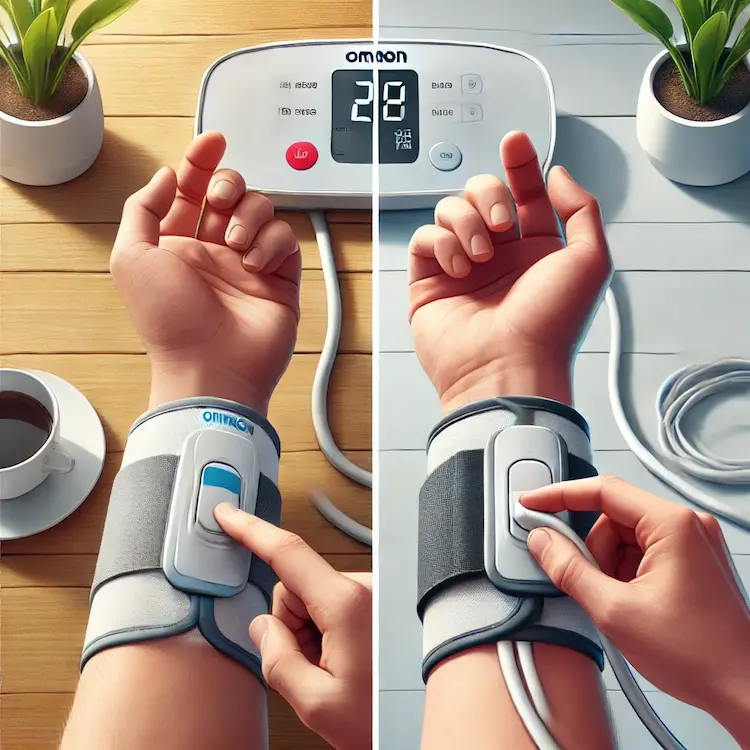Blood pressure monitors are essential medical devices for home and clinical use, allowing individuals to track their cardiovascular health conveniently. Two popular models from Omron—the Omron M2 and Omron RS3—are often compared for their comfort and usability, particularly regarding their cuff design.
This article delves into a comprehensive comparison of the Omron M2 (upper-arm monitor) and the Omron RS3 (wrist monitor) to determine which device provides a more comfortable cuff experience. We’ll explore factors like cuff ergonomics, accuracy, ease of use, and potential health impacts, helping you make an informed decision.
Why Cuff Comfort Matters in Blood Pressure Monitoring?
Cuff comfort plays a crucial role in the accuracy and reliability of blood pressure readings. An ill-fitting or uncomfortable cuff can cause discomfort, inconsistent readings, or even discourage users from regular monitoring. Given that high blood pressure affects over 1.28 billion adults worldwide (WHO, 2023), selecting a comfortable and easy-to-use blood pressure monitor is crucial for maintaining long-term health.
Factors influencing cuff comfort include:
- Material – Softness and flexibility of the cuff fabric.
- Fit and adjustability – Whether it conforms well to the arm or wrist.
- Inflation mechanism – The pressure exerted during measurement.
- Ease of wearing – Whether it can be easily positioned without assistance.

Omron M2 vs. Omron RS3: Overview of Each Model
| Feature | Omron M2 (Upper-Arm Monitor) | Omron RS3 (Wrist Monitor) |
|---|---|---|
| Cuff Type | Upper-arm cuff (22-32 cm) | Wrist cuff (13.5-21.5 cm) |
| Comfort Level | Soft, adjustable, but may feel tight during inflation | Lighter and more flexible but requires proper positioning |
| Accuracy | Highly accurate due to upper-arm readings | Slightly variable due to wrist positioning sensitivity |
| Ease of Use | Requires securing around the upper arm | Easier to put on, but placement is critical |
| Portability | Bulkier due to the cuff size | Compact and travel-friendly |
Cuff Design & Comfort: A Detailed Comparison
Omron M2 Cuff: Stability and Accuracy
The Omron M2 features an upper-arm cuff, which is typically considered more accurate than wrist cuffs. The arm provides a more stable blood flow measurement compared to the wrist, reducing potential errors due to hand movement.
- Material & Fit: The Omron M2 cuff is made of soft, flexible fabric that securely wraps around the upper arm. It has a pre-formed design that helps users fit it correctly with minimal discomfort.
- Pressure & Inflation: While the inflation process is gentle, some users may feel a temporary squeezing sensation, which can be uncomfortable for those with sensitive skin or circulation issues.
- Size Considerations: It fits arm circumferences from 22 to 32 cm, making it a better choice for users with medium to large arms. However, those with very small or very large arms may struggle with the fit.
Omron RS3 Cuff: Lightweight and Flexible
The Omron RS3 uses a wrist cuff, making it lighter and more adaptable than the Omron M2. However, wrist cuffs require precise placement for accurate readings.
- Material & Fit: The RS3 cuff is soft, lightweight, and easier to put on, especially for elderly users or those with mobility issues.
- Pressure & Inflation: Since it wraps around the wrist, the inflation is less intense than an upper-arm cuff, making it more comfortable for individuals prone to discomfort.
- Size Considerations: It accommodates wrist sizes from 13.5 to 21.5 cm, making it ideal for users with smaller arms or difficulty securing an upper-arm cuff.
Which One Feels More Comfortable?
Comfort Factors Comparison Table
| Factor | Omron M2 (Upper-Arm) | Omron RS3 (Wrist) |
|---|---|---|
| Material Softness | Soft and cushioned | Soft and lightweight |
| Ease of Application | Requires proper arm positioning | Quick and effortless application |
| Inflation Pressure | Can feel tight on the arm | Gentle on the wrist |
| Fit Adjustability | Good for most adults | Suitable for smaller wrists |
| Portability | Bulky due to arm cuff size | Compact and travel-friendly |
Verdict:
- For users prioritizing accuracy, the Omron M2 offers a more stable reading but may feel tighter.
- For those valuing convenience, the Omron RS3 is lighter and less restrictive, making it more comfortable for daily use.
Health and Societal Impact of Choosing the Right Cuff
An uncomfortable or improperly fitted cuff can lead to:
- Inaccurate blood pressure readings, leading to misdiagnosis or inappropriate treatment.
- Discomfort discouraging regular use, increasing health risks for those monitoring hypertension.
- User frustration, particularly among elderly individuals or those with mobility issues.
According to the American Heart Association, upper-arm monitors are generally recommended for accuracy, but wrist monitors like the Omron RS3 are still valuable for people who find upper-arm cuffs uncomfortable or difficult to use.

Practical Tips: Choosing the Right Model for You
- If you need higher accuracy → Choose Omron M2 (upper-arm).
- If comfort and ease of use matter more → Go for Omron RS3 (wrist monitor).
- If you travel frequently → Omron RS3 is more portable.
- For larger arm sizes → Omron M2 may offer a better fit.
- If you have arthritis or mobility issues → Omron RS3 is easier to wear.
Conclusion
Both the Omron M2 and Omron RS3 offer reliable blood pressure monitoring, but the choice ultimately depends on your comfort preferences and accuracy needs. The Omron M2 provides greater accuracy but may feel tight, while the Omron RS3 is lighter and more comfortable but requires precise positioning.
Key Takeaways:
- Omron M2: Best for accuracy, but tighter fit.
- Omron RS3: More comfortable, but wrist placement is crucial.
- Choose based on personal preference, medical needs, and convenience.
Actionable Recommendations
- Test both models if possible to see which feels more comfortable.
- Follow the manufacturer’s guidelines for proper cuff positioning.
- Consider your arm size and mobility before purchasing.
- Consult a doctor or pharmacist for personalized recommendations.


